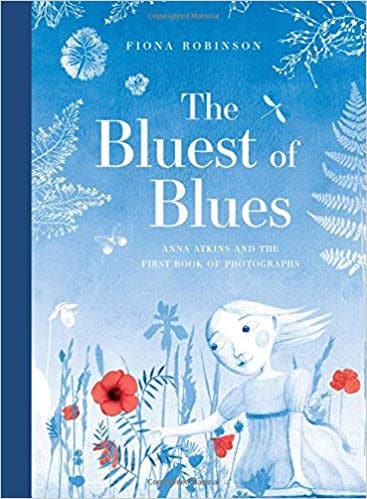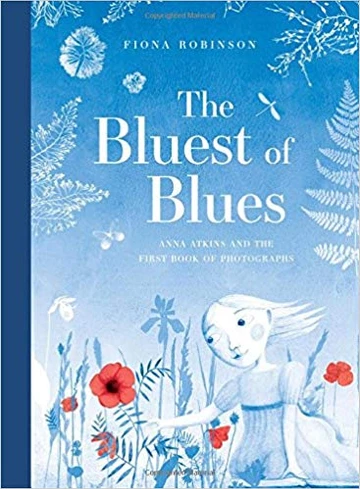BooksforTopics Reading for Pleasure Recommendations

Book Title: The Bluest of Blues (Available here)
Author/Illustrator: Fiona Robinson
Publisher: Abrams
Publication Date: February 2019
Most Suitable For: Upper KS2
Reviewed By: Suzanne Booth (@CreativeMrsB), Class Teacher
This is such a beautifully presented book with striking print images and illustrated drawings. At first glance I wasn’t sure what this was going to be about, and with an interest in PSHE, I was drawn to the title ‘The Bluest of Blues’, thinking this may be a story with a message about moods or feelings. But, unless you are familiar with the name Anna Atkins, and her historical importance (and I have to admit I wasn’t!), the contents of this pretty book are a pleasant surprise.
Anna Atkins is acknowledged to be one of the first women in the world to take a photograph, and one of the first people to publish a book of photographic images. After being given a camera in 1841, Anna was excited by this new process, but it was her introduction to Herschel’s discovery of cyanotype printing that sparked a passion for cyantography; the process of using chemicals that react to sunlight to dye paper and print images. In the book, the author’s own drawings and cyanotypes are combined with reproductions of Anna Atkins’ original work.
Fiona Robinson chooses to tell Anna’s unique story through a timeline, which is an effective format, highlighting the key moments in her life starting with the loss of her mother as a child through to her successful career as a botanist. Her father, a scientist himself, is represented throughout the book as a passionate role model who continually inspires Anna, as well as encouraging her interest in nature and science, which for the time, was unusual for women. This in itself is what makes this such an inspiring book, reminding us of the important role that so many pioneering women in history have contributed to science and art over the years. It also encourages the reader to explore the connections between science and art.
The Bluest of Blues feels very topical and relevant for this generation. The empowerment of women illustrated through Anna’s true story is inspiring and just as important and relevant in education. The rising profile of ‘STEAM’, over ‘STEM’ (where the arts are regarded as equally important amongst science, technology, engineering and maths) makes this story a perfect illustration of the importance of such subjects and also of the role that woman have played in the development of science and art, which is nothing but inspirational.
Curriculum Links:
Art – Outdoor art and nature projects.
Science – Chemical processes, nature/looking at plants and flowers in a different context linking with art.
History – Inspirational people
———————
You can order The Bluest of Blues online or from your local bookshop or library.
Many thanks to the publisher for sending us a review copy of this book and to Suzanne for reviewing it.









